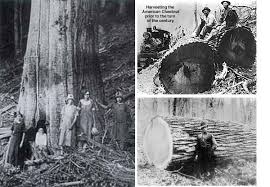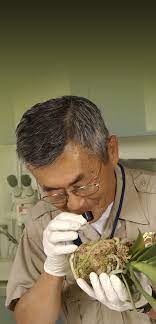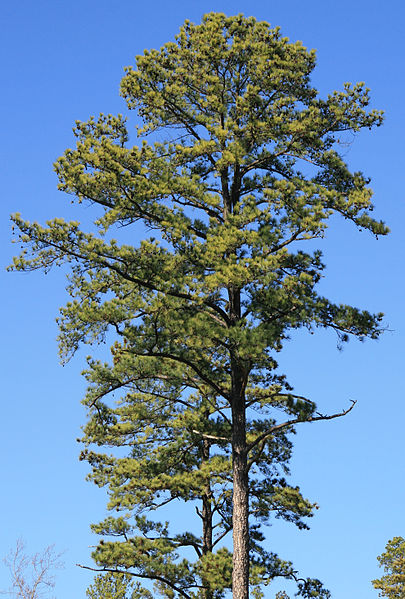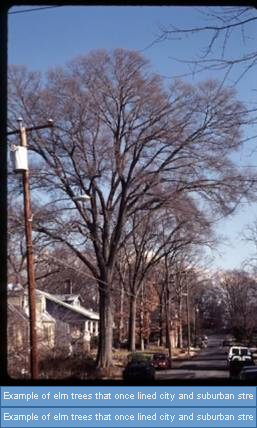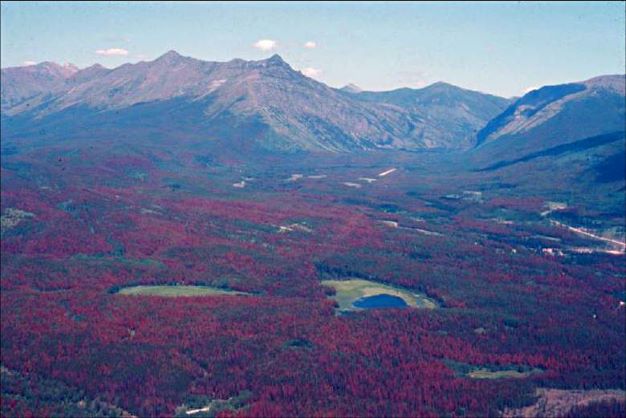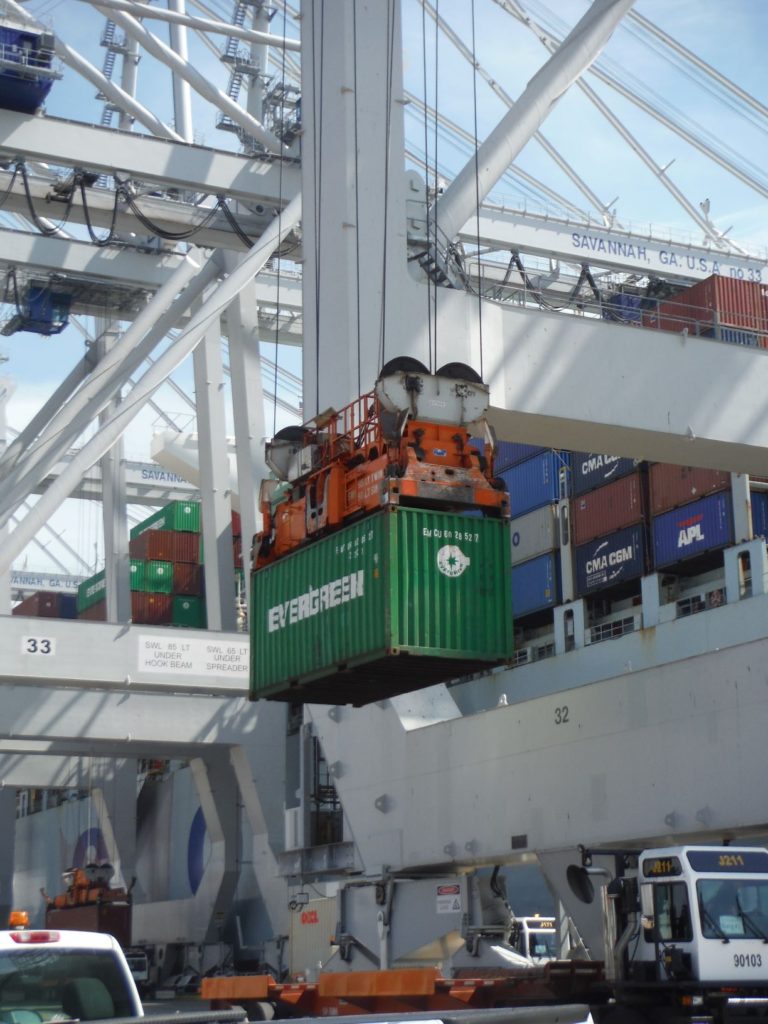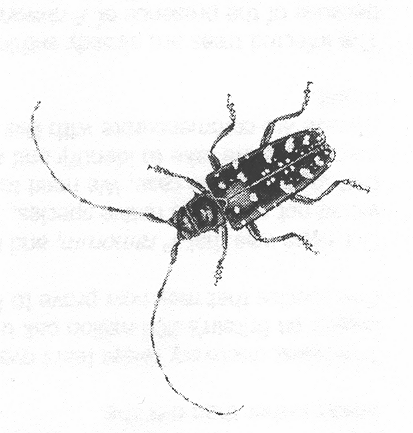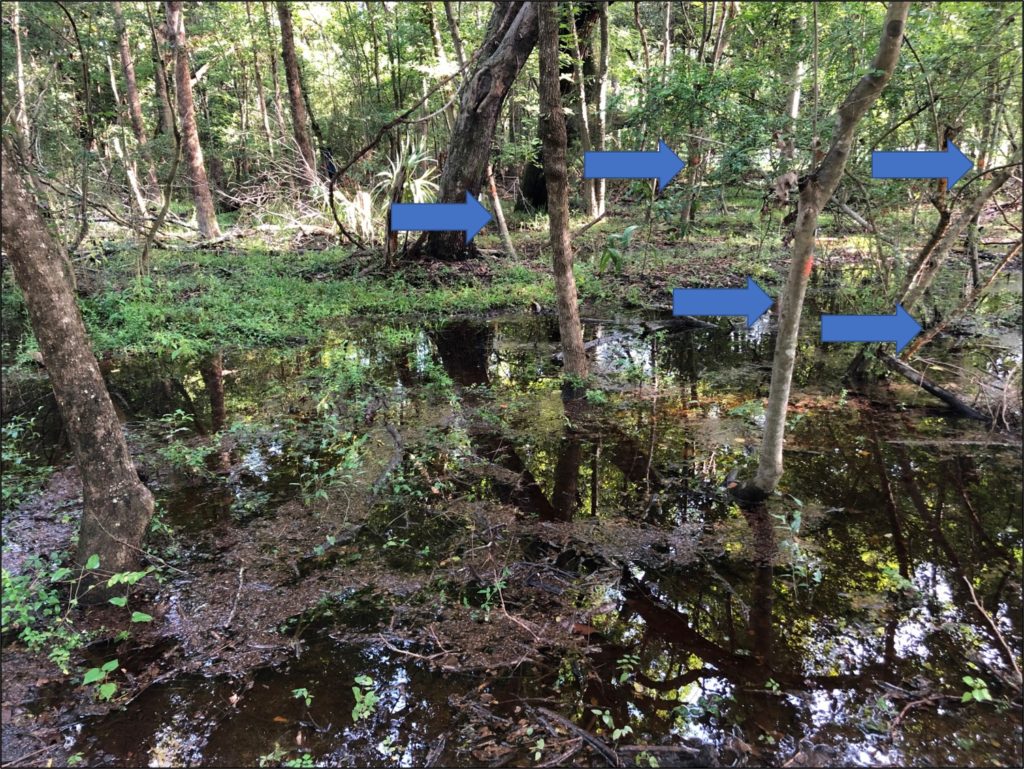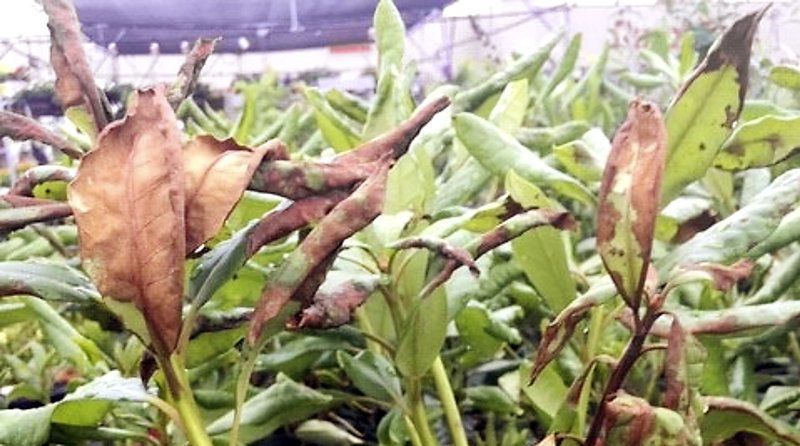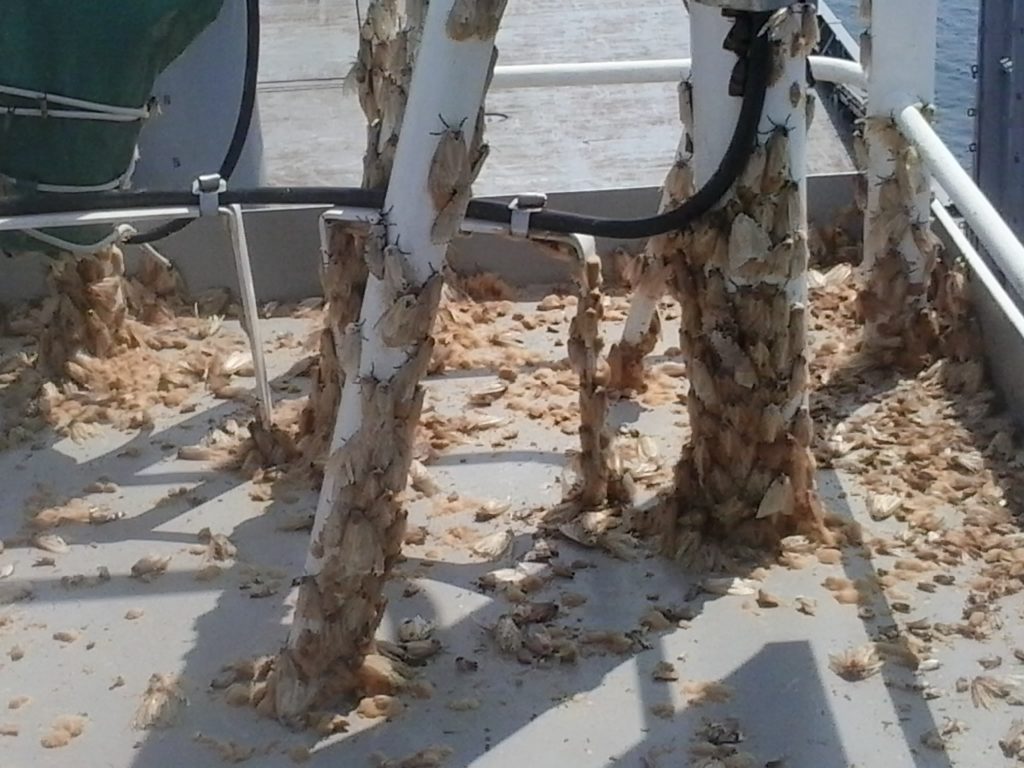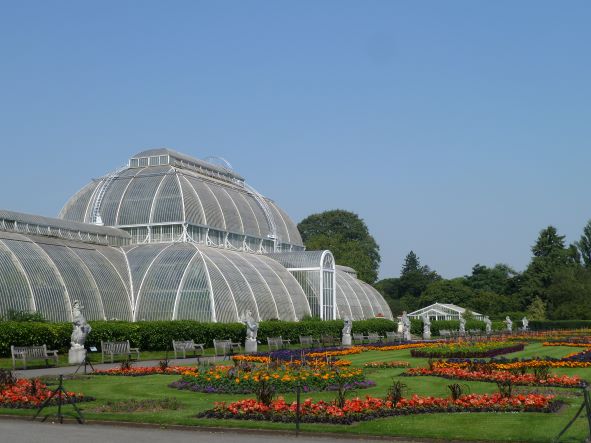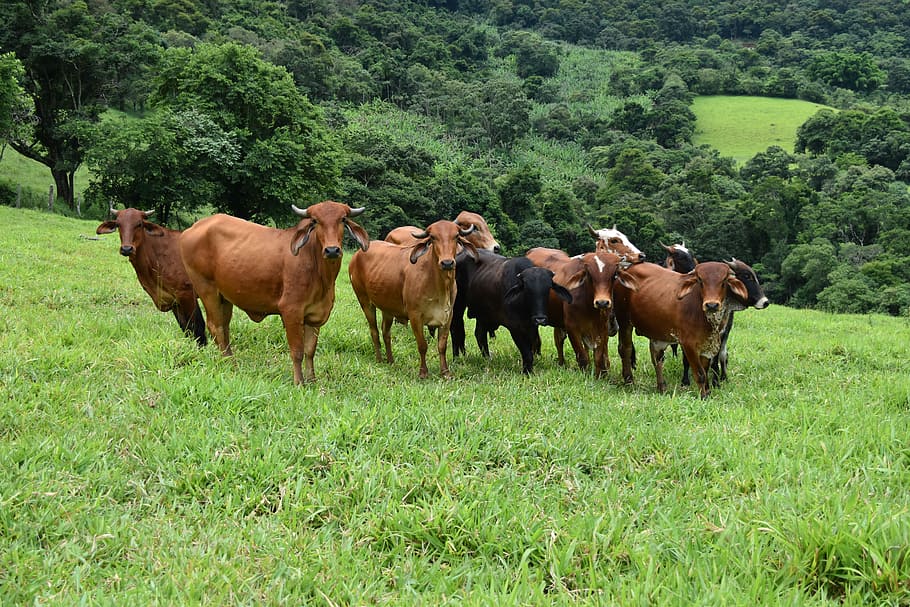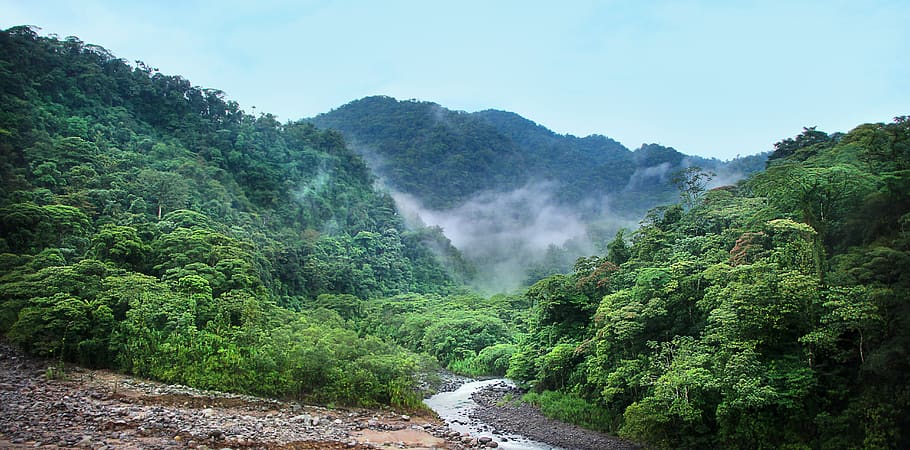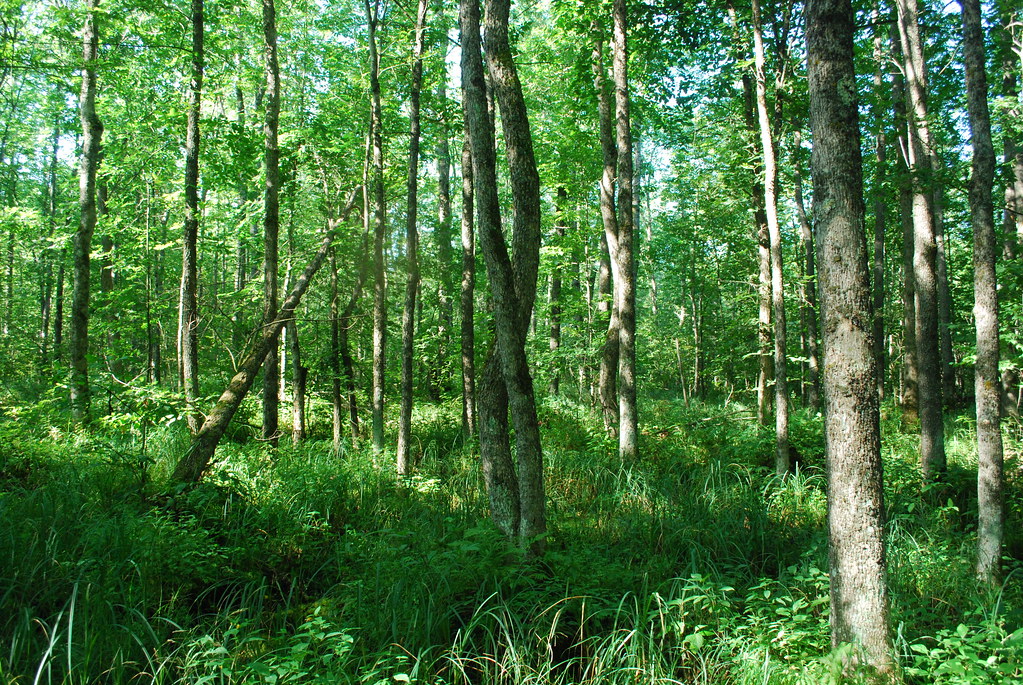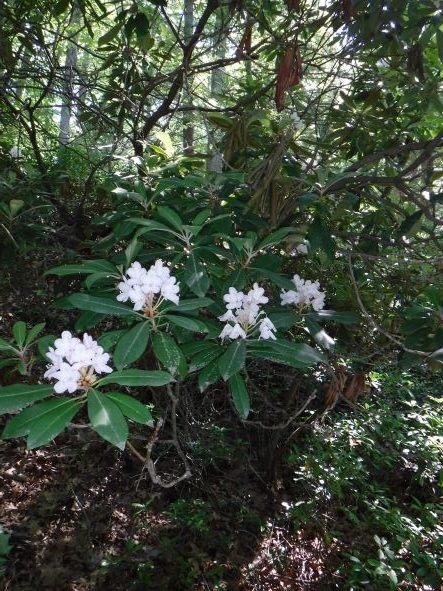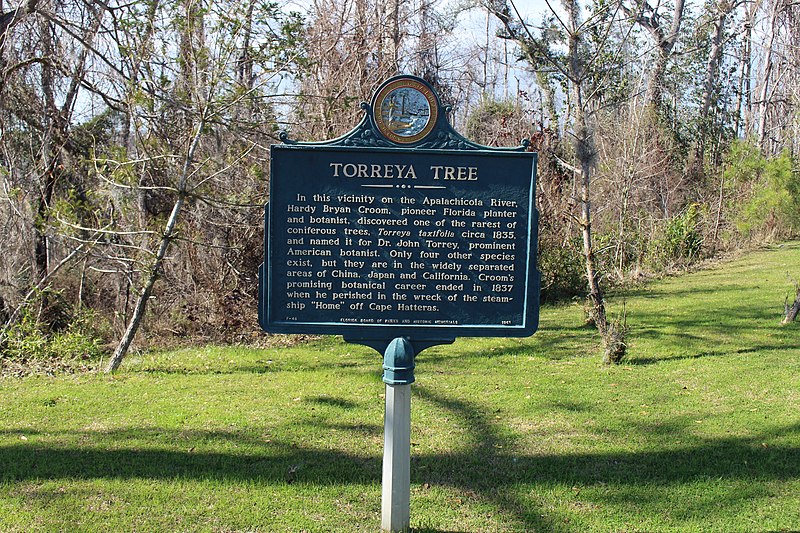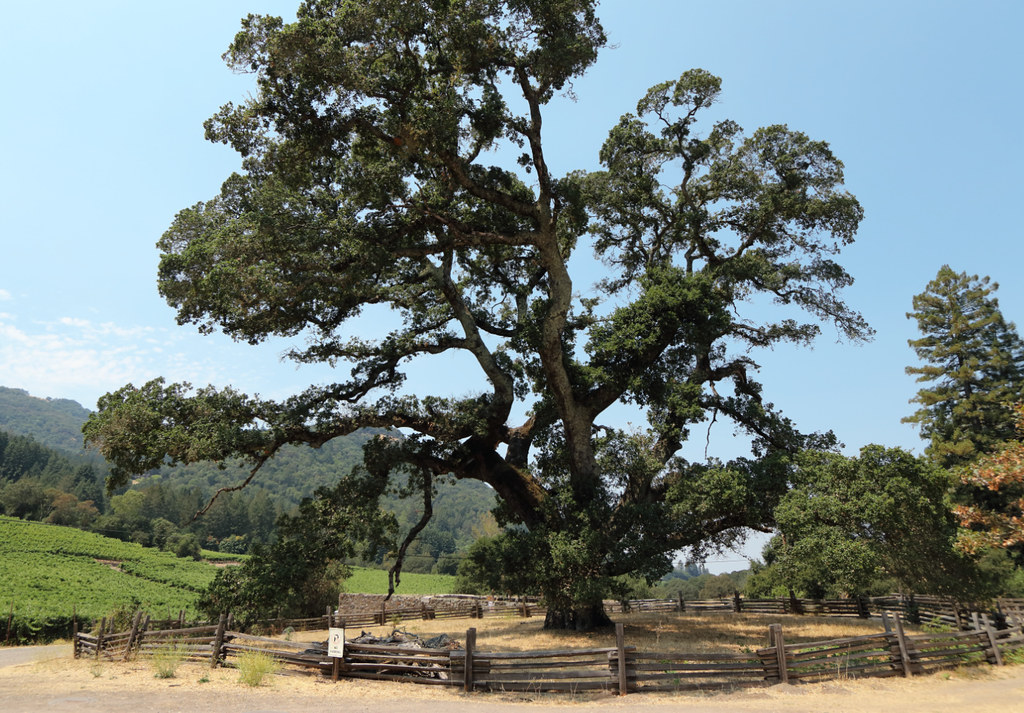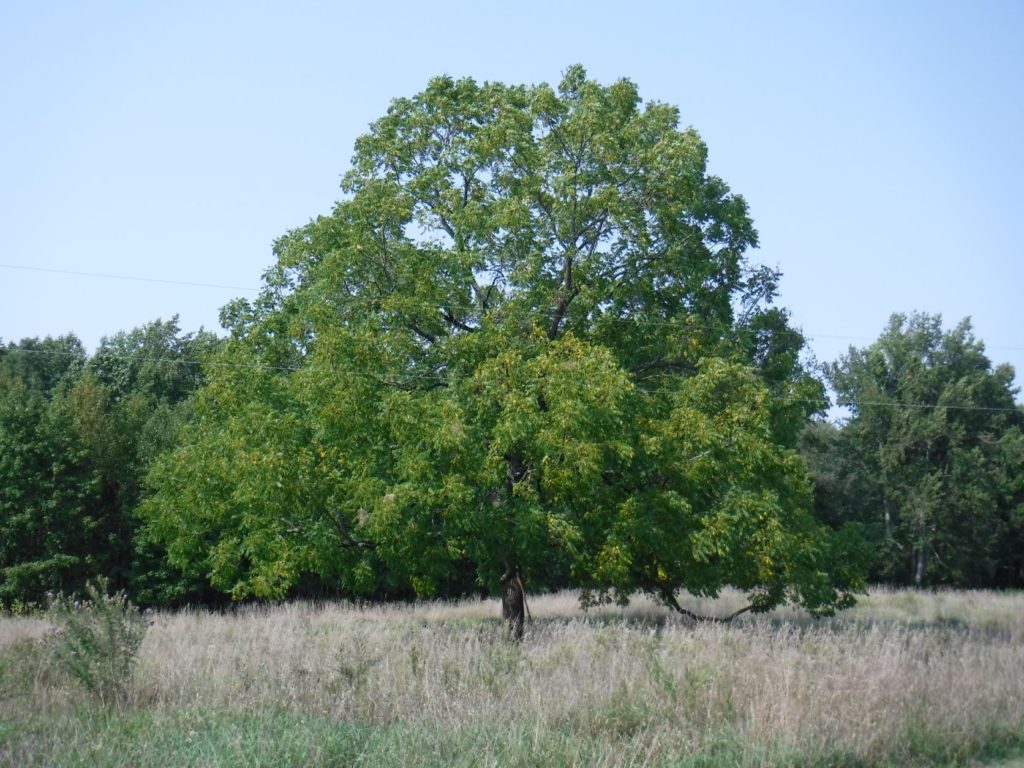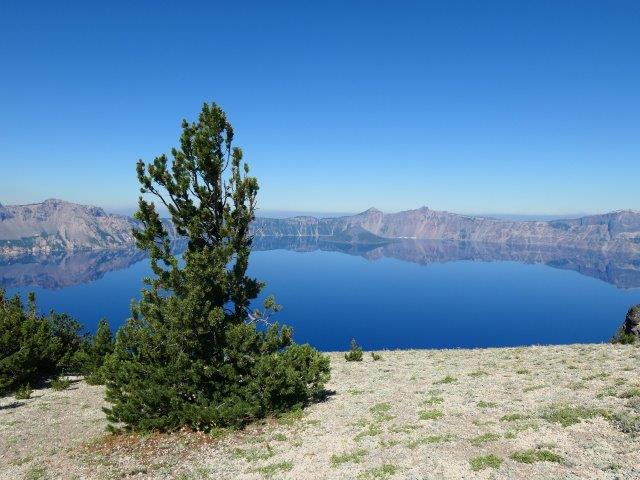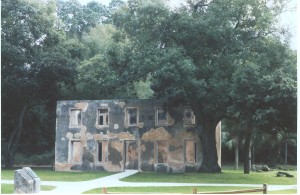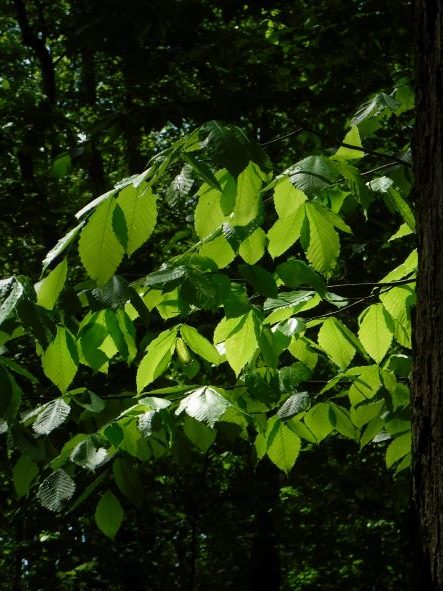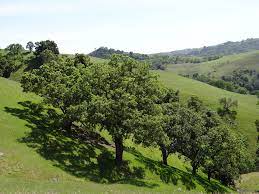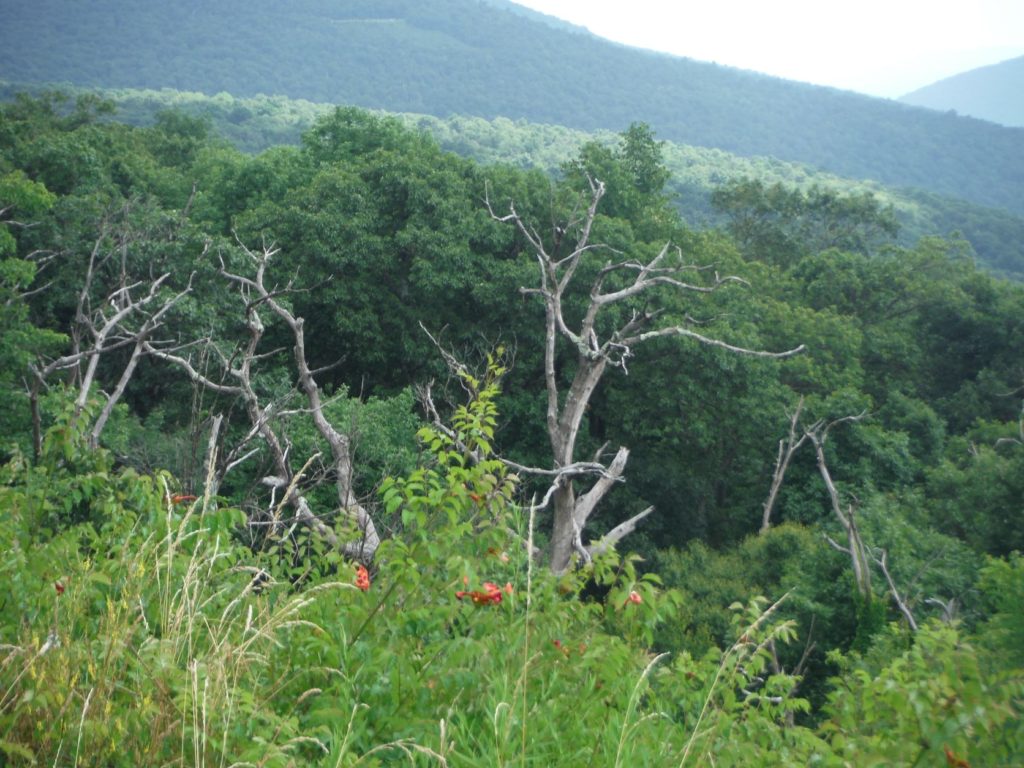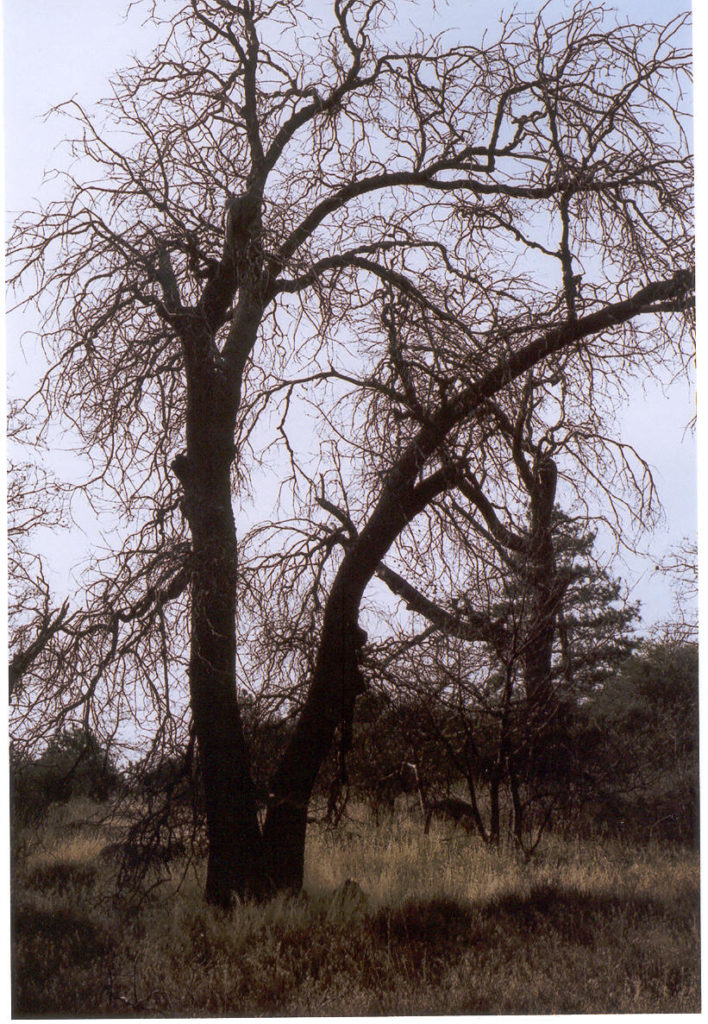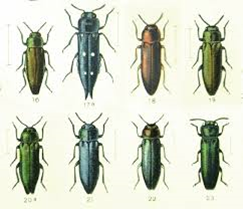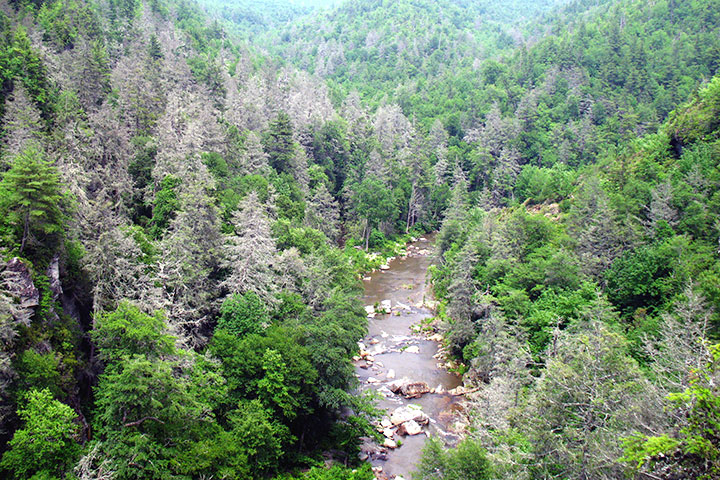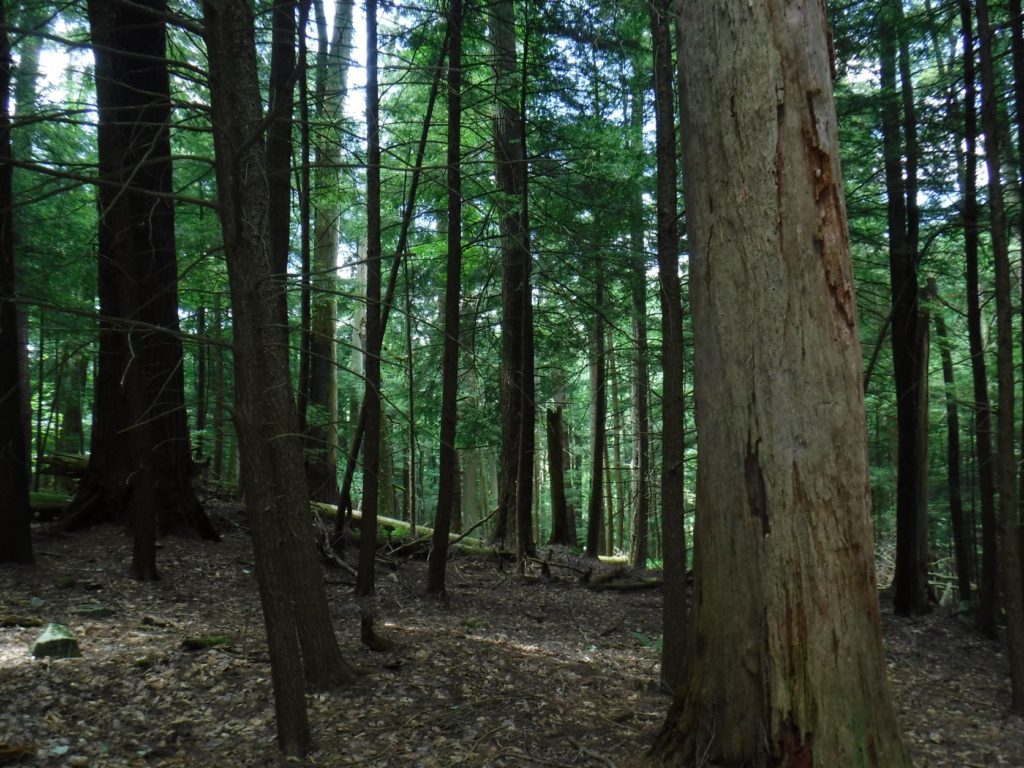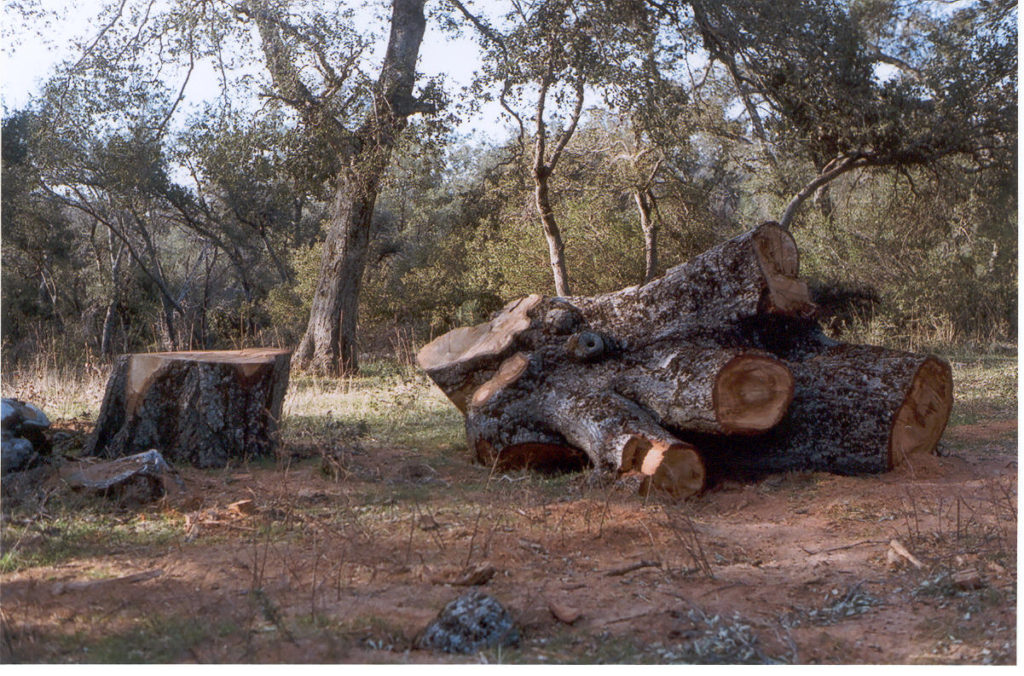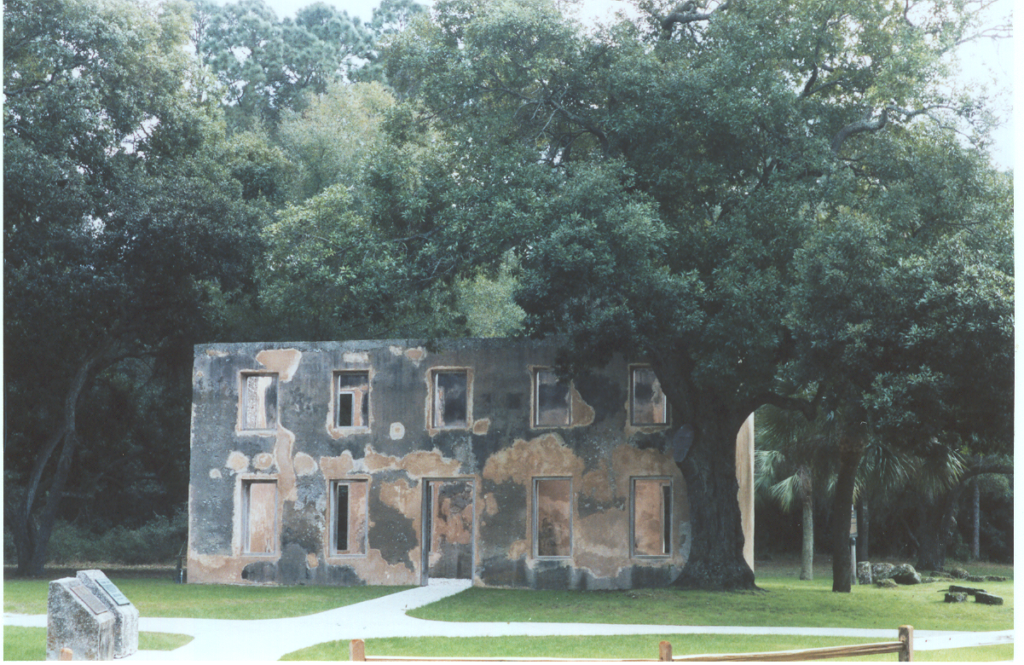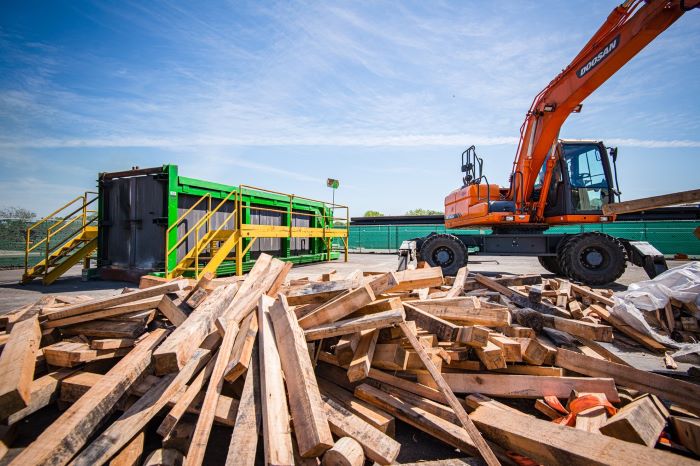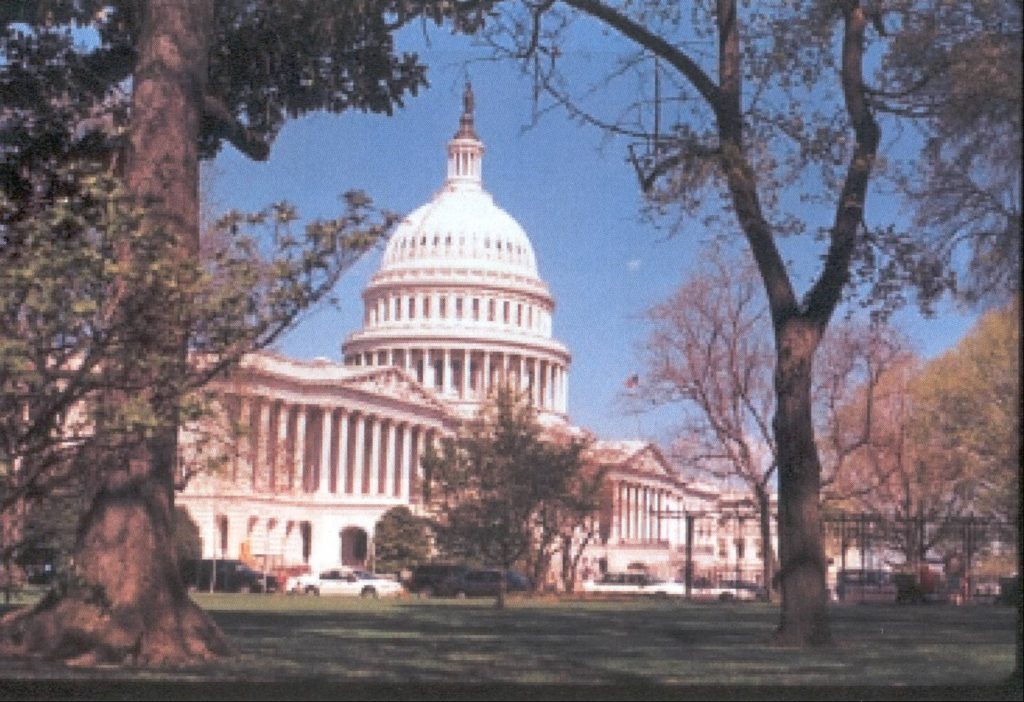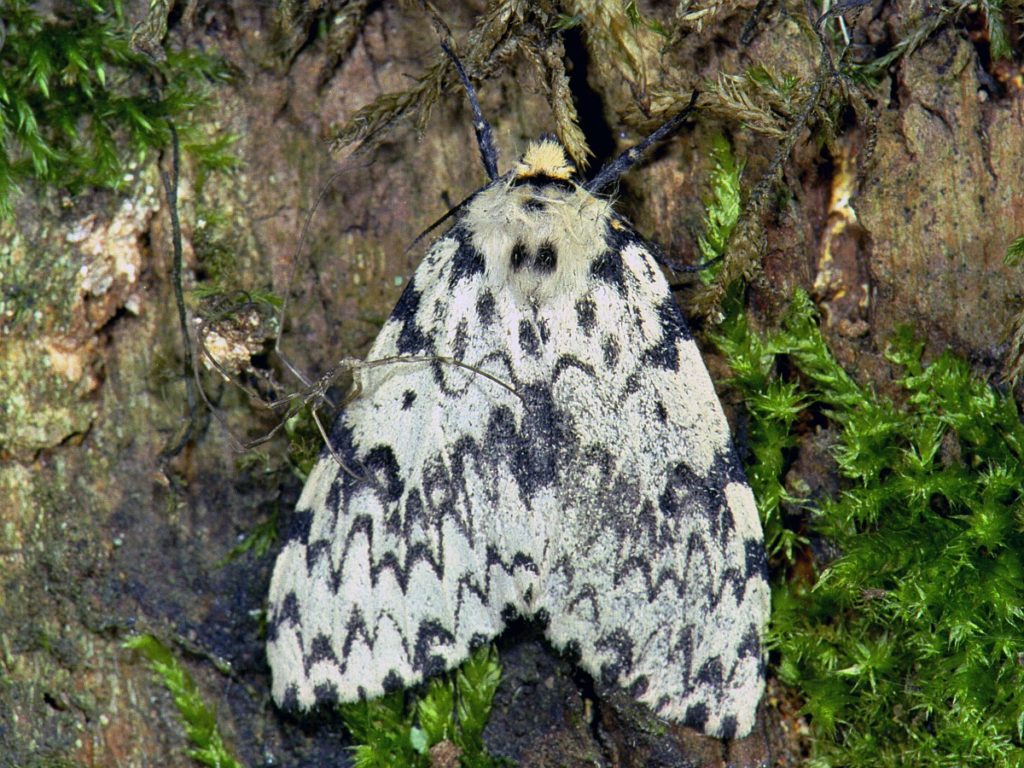Shipments of living plants (called by phytosanitary agencies “plants for planting”) have long been recognized as the most “effective” pathway for transporting pests. To those of us concerned about forest ecosystems, the focus is on woody plants. I have no reason to think herbaceous plant imports are any less risky.
International Rules Impede Prevention Efforts
Efforts to prevent pest introductions via shipments of plants for planting suffered a severe setback when the World Trade Organization Agreement on the Application of Sanitary and Phytosanitary Standards (SPS Agreement) came into force in 1995. Two years later the International Plant Protection Convention (IPPC) was amended to conform to those new trade rules.
David McNamara, then Assistant Director of the European and Mediterranean Plant Protection Organization, identified the ramifications of the new regime: phytosanitary agency officials “have come to realize that our work has changed from ‘preventing introduction of pests while not interfering unduly with trade’ to ‘facilitating trade while doing our utmost to prevent pest introduction.’” [See Chapter 3 of Fading Forests II (2003), available here where I detail how the SPS Agreement and IPPC rules changed phytosanitary policy.]

I was not alone in raising the alarm about the ramifications of the new regime: that phytosanitary regulations target only pests known to cause damage; that commodities from all sources be treated as if they posed equal pest risks, which is not true; that phytosanitary rules impose the lowest level of restriction on trade required to achieve the chosen level of protection.
Scientists Try to Reverse the Damaging Requirements
For example, world-renowned UK pathologist Clive Brasier (2008; full reference at end of the blog) criticized the requirement that pests be identified before they can be regulated. Dr. Brasier estimated that 90% of plant pathogens might be unknown to science, and thus not eligible for regulation under the WTO/IPPC regime. This means that damaging pests are frequently regulated only after they have been introduced and initiated the essentially permanent alteration of the receiving (naïve) environment. He called for an approach based on Darwinian evolutionary theory: maintenance of the geographic barriers that separate species.
A growing number of scientists have reiterated the criticisms in hopes of persuading regulators to reverse the flaws identified in the international trade rules. More than 70 scientists affiliated with the International Union of Forest Research Organizations signed the Montesclaros Declaration in 2011. Circa 2015 – 20 years after the SPS Agreement came into force – several publications reiterated these criticisms and provided scientific support for changing the rules: Roy et al. 2014; Eschen, Roques and Santini 2015; Jung et al. 2015; Klapwijk et al. 2016; and now Barwell et al. 2021. Summaries follow.
Roy et al. (2014) said the WTO SPS rules have been largely ineffective at protecting forests and other ecosystems (natural or managed) for two main reasons: (1) their primary aim is to promote international trade rather than protect the environment and (2) they require that a species be identified as a pest before it can be regulated, even though invading organisms are often either “new” (i.e. scientifically unknown) species or not troublesome within their native ranges.
Eschen, Roques and Santini (2015) found that regulators’ focus on known pests meant that 90% of the exotic insect pests detected in Europe 1995–2004 had not been designated for regulation before they became established on the continent.
Klapwijk et al. (2016) concluded that the European Union phytosanitary rules have provided insufficient protection because often harmful organisms that enter the EU were unknown, and therefore unregulated, before establishment. A pending amendment would still not provide for precautionary assessments of high-risk commodities or provide for restrictions on the highest-risk commodities, such as imports of large plants or plants in soil. Green et al. (2021) call the international system “fallible” in the face of huge volumes of imports, including large, semi-mature trees. As Jung et al. 2018 point out, the scientific community has repeatedly urged regulators to require the use of preventative system approaches for producing Phytophthora-free nursery stock.
Scott Schlarbaum, University of Tennessee, and I reiterated these issues and cited additional examples in Chapter 7 of Fading Forests III. Since 2015 I have blogged numerous times about the risks associated with imported plants for planting and detection of numerous previously unknown Phytophthora species in Vietnam. [On the website, scroll to the bottom of the monthly listing of blogs, find the “categories” section, click on “plants as pest vectors”.]
Billions of Plant on the Move
Shipment of plants among America, Europe and Asia put all three continents at risk. First, North America, Europe and Asia share more than 100 genera of tree species (USDA 2000), so introduced insects and microbes are likely to find suitable hosts in their new home.
Second, North America and Europe import high volumes of plants. The U.S. imported an estimated 3.2 billion plant “units” (cuttings, rooted plants, tissue culture, etc.) in 2007 (Liebhold et al. 2012). By 2020, imports had declined to 1.8 B plant units plus nearly 723,000 kilograms of woody plant seeds (USDA 2021). Epanchin-Niell (pers. comm.) found that in the period FY2010-FY2012, the U.S. imported an average of about 300 million woody plant units per year (in 16,700 shipments). The plants included representatives of 175 woody plant genera. Europe imports even more plants; just 10 continental countries imported 4.3 billion living plants from overseas in 2010; 20.8% were woody plants (Jung 2015). The United Kingdom, home to famously enthusiastic gardeners, imported £1.3 billion worth of plants in 2018 (Green et al. 2021). Eschen, Roques and Santini (2015) document the rising number of invertebrate pests and pathogens associated with these imports. Green et al. (2021) note the risk to social values, especially tree plantings to sequester carbon, posed by rising introductions of tree-killing pathogens.
In response to the obvious failings of the international phytosanitary system, non-governmental experts have sought strict limits on imports of plant taxa and types posing the highest risk. Campbell and Schlarbaum (2003 and 2014) and Roy et al. (2014) advocate allowing entry of woody plants only in the form of seed and tissue cultures. Lovett et al. (2016) calls for applying APHIS’ NAPPRA authority to prohibit imports of woody plants in the 150 genera that North America shares with Europe and Asia. (I have criticized how NAPPRA is applied in earlier blogs – here and here.) Eschen, Roques and Santini (2015) suggest requiring that most imported plants be subjected to post-entry quarantine.

Yet, I see no evidence that either American or European governments are willing to consider substantial alteration of the international system – even in order to curb the highest risk. The current WTO/IPPC system at least contemplates another solution: requiring that imported plants be produced under clean stock or critical control point production programs. See ISPM#36 and RSPM#24 and USDA APHIS’ revision of the Q-37 regulation. Use of critical control point approaches has been suggested by Campbell and Schlarbaum (2014). It is also part of the comprehensive program called for by Jung et al. (2015). Jung et al. (2015) note the need for rigorous enforcement as well as campaigns to develop consumer awareness, creating an incentive for the nursery industry to distribute only clean stock. However, the non-governmental authors advocate application of critical control point programs to far more plant taxa than the phytosanitary officials have envisioned, so apparent agreement between advocates and officials is illusory. Attempts to create such a program are more advance domestically, for example see Swiecki, et al, 2021.
New Ways to Fix the System?
Unwilling to challenge the WTO/IPPC system directly, national phytosanitary officials are instead adopting approaches and technologies aimed at reducing the number of species that remain “unknown”. New molecular identification techniques are facilitating rapid identification of difficult-to-distinguish microbes at ports or as part of screening or monitoring programs. This advance is cheered by scientists [e.g., Eschen, Roques and Santini (2015); Jung et al. (2015)] as well as phytosanitary officials.
Authorities are also attempting to improve inspection at the border by targetting shipments thought to be of high risk.
Both these actions have limited efficacy, however. Eschen, Roques and Santini (2015) still say that given the difficulty of reliably identifying fungi and fungal-like organisms, authorities should reject any consignment with disease symptoms. Furthermore, greater certainty in identifying organisms does not overcome information gaps about their invasibility or possible virulence.
Targetting based on past interceptions, a mainstay of inspection programs, is increasingly considered unreliable – scientists warn about the “bridgehead effect”. That is, when non-native pests establish in new countries and then are transported from there [see Bertelsmeier and Ollier (2021); although this article concerns ants].
Others are exploring strategies to improve authorities’ ability to evaluate poorly known species’ possible impacts. There is enthusiastic endorsement of the concept of “sentinel” plantings. These are a tool to detect pests that attack tree species growing outside the host tree’s natural range. Others are trying to identify species traits or other factors that can be used to predict impacts, as explored below.
Scientists’ Efforts in North America
One team assessed 111 fungi associated with 55 Asian and European scolytine beetle species. None was found to be virulent pathogens on two pine species and two oak species native to the Southeastern U.S. (defined as having an impact similar to Dutch elm disease or laurel wilt). Twenty-two fungal species were minor pathogens (Li et al. 2021).
Mech et al. (2019) are trying to rank threats by non-native insects pose to North American tree species. (They did not evaluate pathogens). They evaluated the probability of a non-native insect causing high impact on a novel North American host as a function of the following: (a) evolutionary divergence time between native and novel hosts; (b) life history traits of the novel host; (c) evolutionary relationship of the non-native insect to native insects that have coevolved with the shared North American host; and (d) the life history traits of the non-native insect. The team has published its analyses of insects that specialize on conifers and hardwoods; they will publish on generalist insect pests in the near future. The insects evaluated were those identified in studies by Aukema et al. (2010) and Yamanaka et al. (2015).
Regarding conifers, the factors driving impacts were found to be:
1) The time (in millions of years) since a North American host tree species diverged from a coevolved host of the insect in its native range.
2) The tree host species’ shade and drought tolerance.
3) The presence or absence of a closely related native herbivore in North America.
None of the insect life history traits examined, singly or in combination, had predictive value.
There are interesting differences when considering hardwoods. Schultz et al. (2021) find that the most important predictive factor is an insect trait: being a scolytine beetle. Two tree-related factors are moderately predictive: moderate density of the wood, and divergence time between native and novel hardwood hosts.While this last factor is shared with the analysis of insects on conifers, the divergence period itself differs. For hardwood trees there is no predictive value tied to whether a related native insect attacks the North American host.
[For details, see also the blogs posted here and here.]
In a report issued earlier this year, in response to §10110 of the Agriculture Improvement Act (Farm Bill) of 2018 (USDA 2021), APHIS claims that recent changes to managing plant imports has cut interceptions via the plants for planting pathway to 2% of total forest pest interceptions during the period 2013 – 2018. The contributing agency actions are listed as
• Developing an offshore greenhouse certification program that gives U.S. producers a more reliable supply chain of healthy plant cuttings;
• Implementing risk-based sampling to focus port inspections on higher-risk shipments [but note questions about this approach raised by Eschen, Roques and Santini (2015)].
• Began using of molecular diagnostics at ports to detect high-risk pests that physical inspection would miss;
• Restricting imports of some plants under authority of the NAPPRA program; and
• Increasingly applying standardized systems approaches.
APHIS says its preclearance programs span 23 countries and cover 68 different types of commodities. In addition, APHIS has certified 25 offshore facilities in 12 countries. However, the report does not say how many of these agreements cover production of woody plants – those most likely to transport forest pests.
APHIS has had a greenhouse certification program with Canada since 1996. A high proportion of U.S. woody plant imports comes from Canada. The recent report (USDA 2021) lists source countries for the highest numbers of pest interceptions for plants for planting – although not in order of detections. Canada is listed – in bold type. The meaning of this highlight is not explained. (China is also listed in bold.) More disturbing, the report makes no mention of the suspicion that at least some of the plants infested by Phytophthora ramorum that were shipped to 18 states in spring 2019 originated in a British Columbia nursery.
Scientists’ Efforts in Europe
The focus in Europe appears to be on pathogens, specifically the Phytophthora genus. Europeans are responding to several recently-introduced highly damaging diseases caused by species in the genus that were unknown to science before introduction. Barwell and colleagues (full reference at end of the blog) sought to explain the species’ impact as measured by traits such as number of countries invaded, latitudinal limits, and host range. They evaluated factors they thought would be easily discerned, such as species’ traits, phylogeny and time since description (as a proxy for extent of scientific understanding of the species’ behavior). The most predictive traits were thermal minima, oospore wall index and growth rate at optimum temperature. They found that root-attacking species of Phytophthora were reported in more countries and on more host families than foliar-attacking species.

Progress – but Still Incomplete Solution to the SPS/IPPC Conundrum
Perhaps these efforts to close information gaps earlier in the invasion process will be accepted by the phytosanitary agencies and the findings will be incorporated into their decision-making. If this happens, scientists’ efforts might contribute substantially to overcoming the challenges created by the SPS/IPPC system. Presumably acting on scientific findings is more acceptable than the more radical approach that I and others have suggested. Still, there remain the “unknown unknowns” – and the SPS/IPPC system continues to hinder measures that might be effective in preventing their introduction.
Meanwhile, the British are pursuing both a nursery certification/accreditation program and a coordinated strategy for early detection of Phytophthora pathogens in the nursery trade. Green et al. (2021) found that nursery owners could not justify the cost of adopting best management practices if they were aimed at preventing the presence of Phytophthora alone. They could if the program sought to curtail the presence and spread of numerous plant pathogens. A decade ago in the U.S., The Nature Conservancy explored a possible structure combining a clean stock system with insurance. The latter would reimburse participating nurseries for inventory lost to pests as long as the nursery used prescribed pest-avoidance strategies. The SANC program attempts to incentivize adoption of clean stock systems by the American nursery industry. However, it does not include the insurance concept.
Another helpful step would be to change the pest risk assessment process by assessing the risks more broadly. Perhaps the analysis could evaluate the risks associated with – and determine effective measures to counter – certain organisms, i.e.:
(a) pests associated with any bare-root woody plants from a particular region, for example East Asia; (b) pests associated with roots or stems, without limiting the study to particular kinds of plants or geographic regions of origin; or
(c) single types of pests, such as a fungal pathogen without regard to its species, on any imported plant (regardless of taxon or country of origin), especially learning how to prevent their presence.
SOURCES
Aukema, J.E., D.G. McCullough, B. Von Holle, A.M. Liebhold, K. Britton, & S.J. Frankel. 2010. Historical Accumulation of Nonindigenous Forest Pests in the Continental United States. Bioscience. December 2010 / Vol. 60 No. 11
Barwell, L.J., A. Perez-Sierra, B. Henricot, A. Harris, T.I. Burgess, G. Hardy, P. Scott, N. Williams, D.E. L. Cooke, S. Green, D.S. Chapman, B.V. Purse. 2021. Evolutionary trait-based approaches for predicting future global impacts of plant pathogens in the genus Phytophthora. Journal of Applied Ecology 2021; 58:718-730
Bertelsmeier, C. and S. Ollier. 2021. Bridgehead effects distort global flows of alien species. Diversity and Distributions https://onlinelibrary.wiley.com/doi/full/10.1111/ddi.13388
Brasier C.M. 2008. The biosecurity threat to the UK and global environment from international trade in plants. Plant Pathology 57: 792–808.
Eschen, R., A. Roques and A. Santini. 2015. Taxonomic dissimilarity in patterns of interception and establishment of alien arthropods, nematodes and pathogens affecting woody plants in Europe. Journal of Conservation Biogeography Diversity and Distributions (Diversity Distrib.) (2015) 21, 36–45
Green, S., D.E.L. Cooke, M. Dunn, L. Barwell, B. Purse, D.S. Chapman, G. Valatin, A. Schlenzig, J. Barbrook, T. Pettitt, C. Price, A. Pérez-Sierra, D. Frederickson-Matika, L. Pritchard, P. Thorpe, P.J.A. Cock, E. Randall, B. Keillor and M. Marzano. 2021. PHYTO-THREATS: Addressing Threats to UK Forests and Woodlands from Phytophthora; Identifying Risks of Spread in Trade and Methods for Mitigation. Forests 2021, 12, 1617 https://doi.org/10.3390/f12121617ý
Jung, T., et al. 2015. Widespread Phytophthora infestations in European nurseries put forest, semi-natural and horticultural ecosystems at high risk of Phytophthora diseases. Forest Pathology. November 2015.
Jung, T., A. Pérez-Sierra, A. Durán, M. Horta Jung, Y. Balci, B. Scanu. 2018. Canker and decline diseases caused by soil- and airborne Phytophthora species in forests and woodlands. Persoonia 40, 2018: 182–220
Klapwijk, M.J., A.J. M. Hopkins, L. Eriksson, M. Pettersson, M. Schroeder, A. Lindelo¨w, J. Ro¨nnberg, E.C.H. Keskitalo, M. Kenis. 2016. Reducing the risk of invasive forest pests and pathogens: Combining legislation, targeted management and public awareness. Ambio 2016, 45(Suppl. 2):S223–S234 DOI 10.1007/s13280-015-0748-3
Li, Y., C. Bateman, J. Skelton, B. Wang, A. Black, Y. Huang, A. Gonzalez, M.A. Jusino, Z.J. Nolen, S. Freeman, Z. Mendel, C. Chen, H. Li, M. Kolařík, M. Knížek, J. Park, W. Sittichaya, P.H. Thai, S. Ito, M. Torii, L. Gao, A.J. Johnson, M. Lu, J. Sun, Z. Zhang, D.C. Adams, J. Hulcr. 2021. Pre-invasion assessment of exotic bark beetle-vectored fungi to detect tree-killing pathogens. Phytopathology. https://doi.org/10.1094/PHYTO-01-21-0041-R
Liebhold, A.M., E.G. Brockerhoff, L.J. Garrett, J.L. Parke, and K.O. Britton. 2012. Live plant imports: the major pathway for forest insect and pathogen invasions of the US. Front. Ecol. Environ. 2012; 10(3):135-143
Mech, A.M., K.A. Thomas, T.D. Marsico, D.A. Herms, C.R. Allen, M.P. Ayres, K.J. K. Gandhi, J. Gurevitch, N.P. Havill, R.A. Hufbauer, A.M. Liebhold, K.F. Raffa, A.N. Schulz, D.R. Uden, & P.C. Tobin. 2019. Evolutionary history predicts high-impact invasions by herbivorous insects. Ecol Evol. 2019 Nov; 9(21): 12216–12230.
Roy, B.A., H.M Alexander, J. Davidson, F.T. Campbell, J.J. Burdon, R. Sniezko, and C. Brasier. 2014. Increasing forest loss worldwide from invasive pests requires new trade regulations. Frontiers in Ecology and the Environment 12(8), 457-465
Schulz, A.N., A.M. Mech, M.P. Ayres, K. J. K. Gandhi, N.P. Havill, D.A. Herms, A.M. Hoover, R.A. Hufbauer, A.M. Liebhold, T.D. Marsico, K.F. Raffa, P.C. Tobin, D.R. Uden, K.A. Thomas. 2021. Predicting non-native insect impact: focusing on the trees to see the forest. Biological Invasions.
Swiecki, T. J., Bernhardt, E. A., Frankel, S. J., Benner, D., & Hillman, J. (2021). An accreditation program to produce native plant nursery stock free of Phytophthora for use in habitat restoration. Plant Health Progress, PHP-02. https://apsjournals.apsnet.org/doi/abs/10.1094/PHP-02-21-0025-FI
United States Department of Agriculture Animal and Plant Health Inspection Service and Forest Service. 2000. Pest Risk assessment for Importation of Solid Wood Packing Materials into the United States.
United States Department of Agriculture Animal and Plant Health Inspection Service. Report on the Arrival in the US of Forest Pests Through Restrictions on the Importation of Certain Plants for Planting. https://www.caryinstitute.org/sites/default/files/public/downloads/usda_forest_pest_report_2021.pdf
Yamanaka, T., Morimoto, N., Nishida, G. M., Kiritani, K. , Moriya, S. , & Liebhold, A. M. (2015). Comparison of insect invasions in North America, Japan and their Islands. Biological Invasions, 17, 3049–3061. 10.1007/s10530-015-0935-y
Posted by Faith Campbell
We welcome comments that supplement or correct factual information, suggest new approaches, or promote thoughtful consideration. We post comments that disagree with us — but not those we judge to be not civil or inflammatory.
For a detailed discussion of the policies and practices that have allowed these pests to enter and spread – and that do not promote effective restoration strategies – review the Fading Forests report at http://treeimprovement.utk.edu/FadingForests.htm
